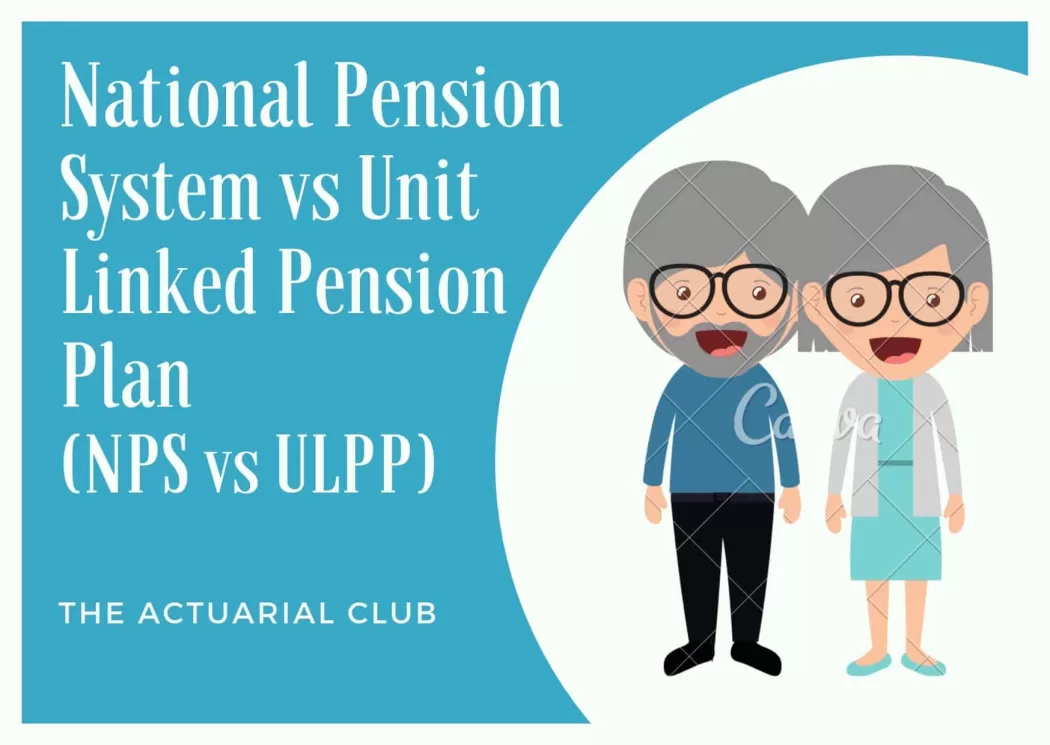Pension plans provide financial security and stability during old age when people don’t have a regular source of income. The most common options are the National Pension System (NPS) and Unit Linked Pension Plan (ULPP). These plans ensure that people live with pride and without compromising on their standard of living during advancing years. Pension scheme gives an opportunity to invest and accumulate savings and get lump sum amount as regular income through annuity plan on retirement.
The most common plans are ULPP and NPS. These retirement investment options are available with varied features.
NPS is a government-sponsored pension scheme. It was launched in January 2004 for government employees. However, in 2009, it was opened to all sections.
The scheme allows subscribers to contribute regularly in a pension account during their working life. On retirement, subscribers can withdraw a part of the corpus in a lump sum and use the remaining corpus to buy an annuity to secure a regular income after retirement.
Also read: Introduction to Role of Actuaries in Pensions
Unit Linked Pension Plans (ULPP) are pension schemes with inbuilt insurance. In these products, in the accumulation phase, you pay premiums regularly till your intended retirement and then purchase an immediate annuity (regular income) from the same insurer.
Comparative study of ULPP vs NPS:
| Parameters | ULPP | NPS |
| Cost | The investment management fee can go up to 1.35%. The charges on fund management, premium allocation, etc. are recurring. | The NPS is cheaper with no recurring charges. The investment management fee is capped at 0.25 per cent. |
| Minimum contribution | The minimum contribution for ULPP ranges between Rs 18,000 and Rs 24,000. The penalty for discontinuation is also Rs. 600 followed by a tedious procedure to close the account. | NPS requires a minimum contribution of Rs 6,000. The discontinuation cost is Rs. 100 after which the account gets closed. |
| Withdrawals | Does not allow withdrawals and buying annuity at term end is compulsory. After maturity, one third of the corpus can be withdrawn as lump sum while the remaining will go towards buying an annuity scheme. | Does not allow withdrawals and buying annuity at term end is compulsory. Only allows for withdrawal of up to 20 per cent of the corpus before turning 60 and the rest has to be invested in an annuity scheme. |
| Taxation | Annual premiums for ULPPs qualify for a tax deduction under Section 80C of the Income Tax Act. On maturity, the one-third withdrawn is also tax-free. | It is an EET (exempt-exempt-tax) investment, meaning the contributions are tax-free. The amount withdrawn at the time of maturity is taxed. |
| Revival | Discontinued Policy can be revived only during 5 years lock-in period and within 2 years from the date of discontinuance. | No deadlines for reactivating a dormant NPS account. Just need to pay the minimum contribution and penalty for the dormant period. |
| Point of Sale | Through various Distribution Channels of Insurance Companies such as Bancassurance, Agents, Web Aggregators, etc. | Open an NPS A/c with entities known as Point of Presence (POP). Most banks, both private and public sector, are enrolled as POPs. |

Conclusions:
NPS offers the advantage of choosing an annuity scheme offering the best rates. With ULPPs, you are mandated to buy the annuity scheme from the same insurer offering the ULPP.
The draft on ULPPs mandates capital guarantee only on death and not on maturity; this will allow insurance companies to offer more aggressive funds.
NPS is a low-cost product, and that doesn’t change even if the IRDAI draft proposals are implemented, but both products suffer limitations and, therefore, can’t be the main vehicle for building a retirement corpus.
The problem with ULPPs is that they earn you a low return during the accumulation phase. They are expensive plans too. Apart from fund management charges ULPP also charges premium allocation charges, policy administration charges, mortality charges, and for guaranteed ULIPs, guarantee charges as well.
If you do not have a regular pension from your employer, it makes sense to divide your investment amount between assured return schemes such as PPF/VPF for capital security and invest in equity mutual funds for higher returns. Depending on your risk appetite and equity exposure required, you may invest in good equity diversified mutual funds.

